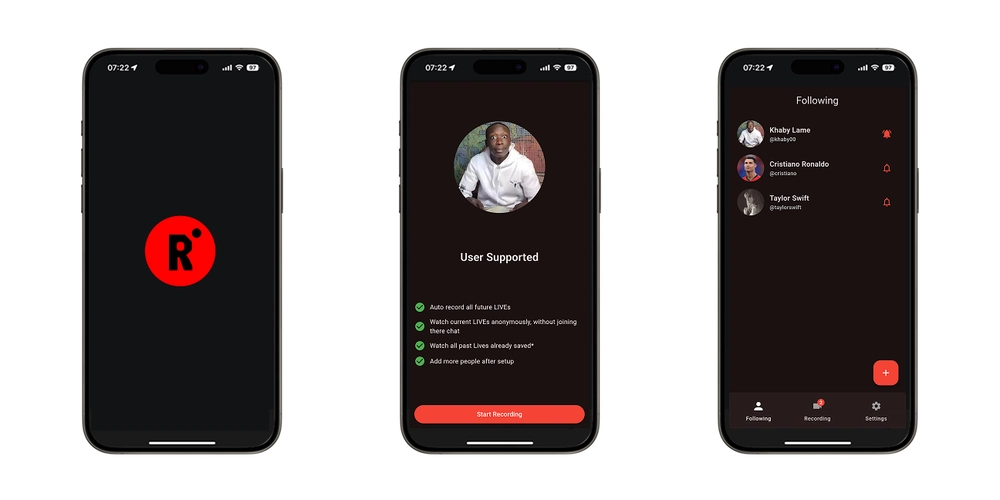Why Modern Tech Teams Are Replacing React—and What They’re Choosing Instead
In the past decade, React has been the undisputed king of front-end development. From startups to Fortune 500 companies, it became the default choice for building modern web apps. But in recent years, a quiet shift has begun. Many Silicon Valley CTOs, engineering leads, and indie devs are starting to move away from React—not out of rebellion, but out of necessity. So, why is this shift happening? And more importantly, what are they switching to? What’s Driving the Shift Away from React? 1. Performance Bottlenecks React introduced the concept of the virtual DOM to manage rendering efficiently. But modern alternatives show that the virtual DOM can be a performance bottleneck, not a feature. New frameworks use fine-grained reactivity or compile-time optimizations that outperform React in both speed and memory usage. 2. Too Much Boilerplate Managing state, context, and side effects in large React apps often leads to an explosion of boilerplate. Redux, Context APIs, hooks—all powerful tools, but when misused or overused, they can make codebases harder to maintain. 3. Poor SSR and Hydration Experience React’s server-side rendering (SSR) and hydration processes are relatively heavyweight. In an era where Core Web Vitals and instant page loads are critical for user engagement and SEO, this inefficiency is a growing concern. 4. Uncertainty Around React’s Roadmap Features like React Server Components and the App Router are still evolving. Many teams feel hesitant to adopt them due to unclear documentation or rapidly changing APIs. Some see React becoming more opinionated, pulling developers toward architectures that may not align with their needs. What Are Developers Switching To? The answer depends on the project’s goals. Here are the top frameworks and why they’re gaining traction: 1. SolidJS What it is: A declarative, JSX-compatible framework with no virtual DOM. Why it's rising: Insanely fast rendering and updates, very small bundle size, and a familiar React-like developer experience. Ideal for: Performance-sensitive apps that want speed without learning an entirely new paradigm. 2. Qwik What it is: A new framework built around the concept of resumability instead of hydration. Why it's special: Loads instantly with almost zero JavaScript on the initial load. The app picks up from where the server left off—no hydration lag. Ideal for: E-commerce, landing pages, and apps where first-load speed is critical. 3. Svelte & SvelteKit What it is: A compiler-based framework that turns your code into highly optimized vanilla JS at build time. Why people love it: It’s simple, expressive, and fast. No virtual DOM, less code to write. Ideal for: Teams who want to write less boilerplate and care about performance. 4. Astro What it is: A content-focused static site generator that supports multiple frameworks (React, Vue, Svelte, etc.). Key feature: Ships zero JavaScript by default and only loads what's necessary. Ideal for: Blogs, documentation sites, marketing pages. So Is React Dead? Not at all. React is still a great choice—especially for teams already deeply invested in its ecosystem or building complex apps that benefit from its mature tooling and community. But today, performance, simplicity, and architecture are at the forefront of decision-making. And React’s competitors are delivering these benefits out of the box. Final Thoughts The move away from React isn’t a trend—it’s an evolution. As the web matures, so do developer expectations. Smaller bundles, faster load times, and simpler codebases are no longer nice-to-haves; they’re requirements. And modern frameworks like SolidJS, Qwik, Svelte, and Astro are rising to meet them. Whether you're building the next unicorn startup or revamping a legacy app, it’s time to ask: Is React still the right fit for the job?

In the past decade, React has been the undisputed king of front-end development. From startups to Fortune 500 companies, it became the default choice for building modern web apps. But in recent years, a quiet shift has begun. Many Silicon Valley CTOs, engineering leads, and indie devs are starting to move away from React—not out of rebellion, but out of necessity.
So, why is this shift happening? And more importantly, what are they switching to?
What’s Driving the Shift Away from React?
1. Performance Bottlenecks
React introduced the concept of the virtual DOM to manage rendering efficiently. But modern alternatives show that the virtual DOM can be a performance bottleneck, not a feature. New frameworks use fine-grained reactivity or compile-time optimizations that outperform React in both speed and memory usage.
2. Too Much Boilerplate
Managing state, context, and side effects in large React apps often leads to an explosion of boilerplate. Redux, Context APIs, hooks—all powerful tools, but when misused or overused, they can make codebases harder to maintain.
3. Poor SSR and Hydration Experience
React’s server-side rendering (SSR) and hydration processes are relatively heavyweight. In an era where Core Web Vitals and instant page loads are critical for user engagement and SEO, this inefficiency is a growing concern.
4. Uncertainty Around React’s Roadmap
Features like React Server Components and the App Router are still evolving. Many teams feel hesitant to adopt them due to unclear documentation or rapidly changing APIs. Some see React becoming more opinionated, pulling developers toward architectures that may not align with their needs.
What Are Developers Switching To?
The answer depends on the project’s goals. Here are the top frameworks and why they’re gaining traction:
1. SolidJS
- What it is: A declarative, JSX-compatible framework with no virtual DOM.
- Why it's rising: Insanely fast rendering and updates, very small bundle size, and a familiar React-like developer experience.
- Ideal for: Performance-sensitive apps that want speed without learning an entirely new paradigm.
2. Qwik
- What it is: A new framework built around the concept of resumability instead of hydration.
- Why it's special: Loads instantly with almost zero JavaScript on the initial load. The app picks up from where the server left off—no hydration lag.
- Ideal for: E-commerce, landing pages, and apps where first-load speed is critical.
3. Svelte & SvelteKit
- What it is: A compiler-based framework that turns your code into highly optimized vanilla JS at build time.
- Why people love it: It’s simple, expressive, and fast. No virtual DOM, less code to write.
- Ideal for: Teams who want to write less boilerplate and care about performance.
4. Astro
- What it is: A content-focused static site generator that supports multiple frameworks (React, Vue, Svelte, etc.).
- Key feature: Ships zero JavaScript by default and only loads what's necessary.
- Ideal for: Blogs, documentation sites, marketing pages.
So Is React Dead?
Not at all.
React is still a great choice—especially for teams already deeply invested in its ecosystem or building complex apps that benefit from its mature tooling and community. But today, performance, simplicity, and architecture are at the forefront of decision-making. And React’s competitors are delivering these benefits out of the box.
Final Thoughts
The move away from React isn’t a trend—it’s an evolution. As the web matures, so do developer expectations. Smaller bundles, faster load times, and simpler codebases are no longer nice-to-haves; they’re requirements. And modern frameworks like SolidJS, Qwik, Svelte, and Astro are rising to meet them.
Whether you're building the next unicorn startup or revamping a legacy app, it’s time to ask: Is React still the right fit for the job?







































































